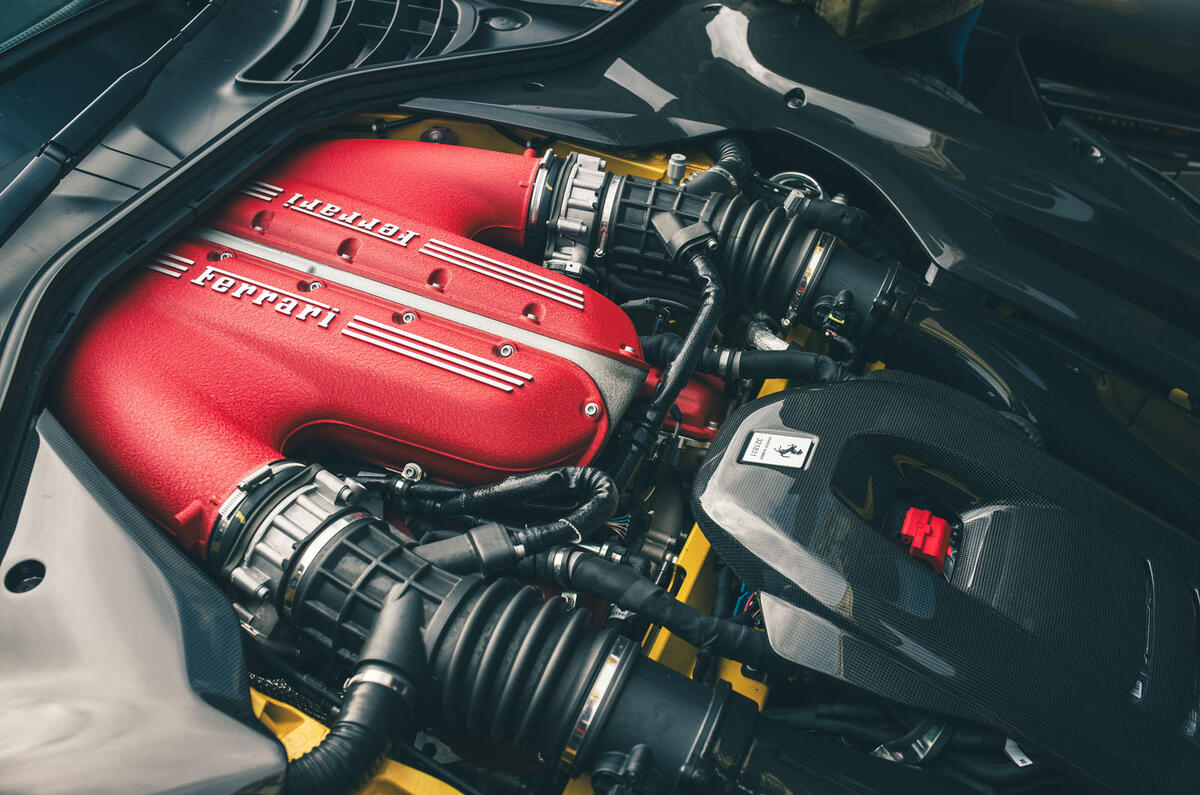Ferrari says electric cars will make up around 20% of its sales in 2030, downgrading a previous ambition to achieve a 40% EV mix by then, and it will continue to offer its V6, V8 and V12 engines well into the future.
The Italian supercar firm has today revealed the technical details of its debut EV - a 1000bhp, quad-motor four-seater with a 122kWh battery and a 329-mile range, which will be launched next year.
The company also outlined its financial forecasts through to 2030, with a "conservative" profit outlook falling below analysts' expectations and sending the company's share price tumbling by 16% - its worst day on the stock market since listing in 2015.
Pure EVs like the Elettrica will make up a fifth of Ferrari sales in 2030, the company said, having stated in 2022 that it was aiming for EV sales to be double that by 2030. Since it made that pledge in 2022, the global market for premium and sporting EVs has faltered, and that has significantly impacted the finances of companies including Lotus and Porsche, and prompted Lamborghini, Aston Martin and Bentley to delay their pure EV launch plans.
But Ferrari CEO Benedetto Vigna said the Italian firm remains committed to launching an EV in 2026 because "we like to do what we say". He acknowledged the struggles of other premium EV makers, but said: "We want to show the world that if we master it well, we can deliver unique driving thrills with electric."
Nonetheless, the drop in market demand has prompted Ferrari to halve its 2030 EV sales forecast, and the remaining 80% of its sales in five years' time will be split evenly between pure-petrol and hybrid cars "based on our client-centricity approach".
Vigna said: "In 2022, we told you we expected 20% of our offer to be ICE, 40% hybrid and 40% electric. Today, in October 2025, we say that the numbers have changed: the 20% ICE became 40% – that's what we see for 2030 – and the 40% electric becomes 20%.
"We realised, thanks to the strong need of personalisation of the car – both for our company and our clients – it's important to push a horizontal diversification."
That means "it's better to have more models with limited volume than a few models with hyper volumes", he said. "In this period, we understood that it's important to increase the number of ICE and limit a little bit the number of electric.
"This is very fine. It is 2025, we are an agile company, and we will see in a few years how the world is changing."









Add your comment